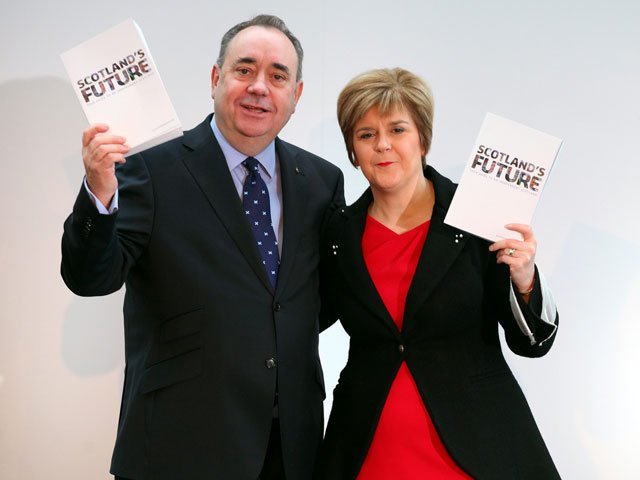Taxation has become a fierce battleground in the independence referendum debate.
The Scottish and UK governments have regularly clashed over the viability of plans to design a system that best suits this country, which seeks to narrow the gap between the rich and the poor.
SNP ministers argue taxes will not increase as a consequence of separation because people in this country pay more in tax – the equivalent of £10,700 per person compared to £9,000 per person in the UK as a whole.
But ministers in London claim independence would lead to sharp increases in tax and lower public spending due to the loss of the so-called “UK dividend” which they say is worth around £1,400 per person a year.
Key policies from the SNP include childcare provision of 1,140 hours a year for every three and four-year-old and vulnerable two-year-old to allow more mothers to return to work and pay tax.
SNP ministers also want to reduce Air Passenger Duty (APD) by 50%, with the ultimate aim of abolishing it, to encourage business travel and reduce holiday flight costs.
The white paper said APD would cost Scotland £200million in lost tourism spending alone by 2016.
The Scottish Government also wants to reduce corporation tax by up to 3% below the prevailing UK rate.
They claim the move to attract businesses could increase the level of output by 1.4%, boost overall employment in Scotland by 1.1% – the equivalent to 27,000 jobs – and raise overall investment in the
economy by 1.9% after 20 years.
The government has also pledged to examine the merits of a fuel duty regulator to stabilise prices at the pump and prioritise an increased personal allowance and tax credits by inflation each year to help low-paid workers.
It has also promised to examine the case for an increase in National Insurance employment allowance for small business to encourage employment.
But the UK Government claims an independent Scotland would have to increase all onshore tax revenues by 13% to continue to provide similar levels of public services over the next 20 years.
According to a report titled Scotland Analysis – fiscal policy and sustainability, this would be equivalent to setting a 28% basic rate of income tax, a 26% standard rate of VAT, and increasing duties on alcohol, tobacco, fuel and vehicles by almost 40%.
It has estimated that in the first year it would cost £570million to increase childcare provision, £130million to reduce APD and £300million to reduce corporation tax by 3%.
The UK Government has claimed that in order to maintain similar levels of taxation over the next 20 years, an independent Scotland would need to reduce public spending by 11%.
It claims the country would face a permanent and widening gap in its public finances relative to the UK, largely due to the decline in oil revenues and demographic effects.
Meanwhile, previously agreed new financial powers to give the Scottish Parliament more responsibility for raising the money it spends come into force in 2015-16.
The introduction of the Scotland Act 2012 means stamp duty, land tax and landfill tax will be replaced with the Land and Buildings Transaction Tax and Scottish Landfill Tax.
Under the legislation, a new rate of Scottish income tax of 10p in the pound will be introduced.
Holyrood’s current borrowing powers will be extended to £500million and a new £2.2billion limit on borrowing for capital spending will be put in place.
Unionist parties have said that more power, particularly in the areas of fiscal responsibility and social security, will be devolved to Holyrood in the event of a “no” vote.
